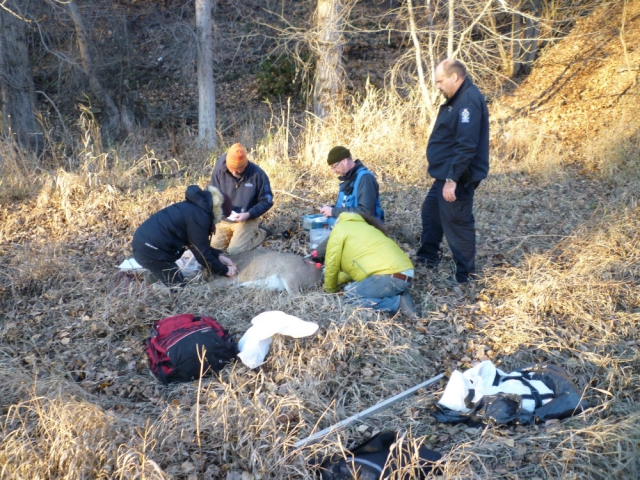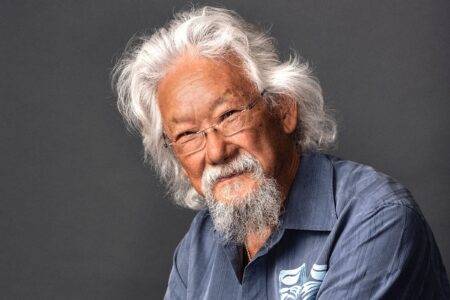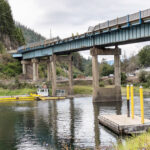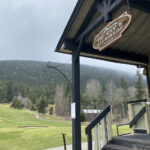Nine "townies" caught and collared; deer being tracked
Perhaps you might have already noticed, but a few of our town deer are wearing some new attire.
On Nov. 12th and 13th a team worked to fit GPS (Global Positioning Satellite) collars on 9 deer. This team consisted of a regional MFLNRO (Ministry of Forests, Lands and Natural Resource Operations) wildlife biologist Aaron Reid, two veterinarians from the University of Calgary Dr. Nigel Caulkett and Dr. Emily Ames, local biologist Jenny Coleshill, and Gary Smith as a former research assistant at the Agassiz Agricultural Research Station, and support from our Conservation Officer Dave Webster.
Logan Proulx, a student from Selkirk College was also present for the first deer collared; Logan will also be working with the data collected as part of a school project. Not only will these collars answer some questions about our town deer but they are also going to be included in Nigel’s study on a new drug combination being tested to anaesthetize wildlife. The process started with finding a deer and ensuring the situation was safe for the deer and the public. The deer was then darted by air-gun at less than 20 metres.
We visually tracked the darted animals until they “bedded” and the senior Vet (Nigel) first approached the animal to assess the level of sedation and administered additional tranquilizer when required. Once Nigel was comfortable with the level of sedation, the rest of us approached and immediately set upon our duties. The team then worked on the animal taking samples and assessing the general well-being of the animal and fitting it with a GPS collar, this took on average about 30 minutes. The important data collections were of blood, hair, skin, and stool.
Inspections for parasites, ticks, worms and other pathogens were also conducted. A neck measurement was made, an ear tag was applied, a radio transmitter collar was affixed, and a weight measurement was made. In each of the nine instances, we then cleared our gear, and injection of a tranquilizer reversal drug was made, and within 10 minutes, without exception, every one of the nine deer hopped up, tried to figure out what they had on their neck, and eventually moved on to continue feeding in the usual manner.
With one exception (who was really only concerned with our safety) every human interaction was very positive. The GPS collars will send two locations a day at dawn and dusk. This data can be looked over at any time and will be compiled by Jenny Coleshill and a student at Selkirk College who will help with some data analysis.
This data will help to answer some unknowns about our deer such as: How far do these deer travel? What size is their home range? Are there any seasonal changes in their movements? What areas of town are being used the most? One thing we do know for certain is that one of the “problems” with the human-deer conflict is vehicle collisions. One of the collared deer was struck by a vehicle only a couple days after being collared. And with that comes the reminder to drive safely and watch out for deer when driving through town!
— Submitted by Gary Smith and Jenny Coleshill






















